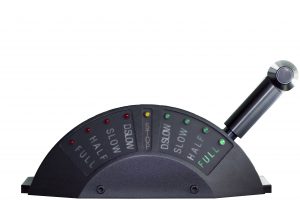The K-12 educational world is having a moment.
And the only thing we know about moments is that they do not last.
Mid-March K-12 districts across the country started to shut down physical locations and offer remote learning instead. Teachers took the reins and had been figuring it out ever since. Teachers are pretty awesome in general, but families haven’t always had the chance to see and hear it like they are now over semi-regular video conference calls.
But what does K-12 do when this school year comes to an end?
When this moment is over, what comes after remote learning?
What happens next school year?

Back to Blended Learning?
If you were practicing Blended Learning before the pandemic, you likely did not have as much difficulty transitioning to remote learning.
Considering recent Remote Learning events, some teachers have tried to go from zero-technology to All-of-the-Technology. This only adds to stress and confusion for the teacher, students, and families.
Maintaining a consistent level of teacher-guided technology use, modeling positive digital citizenship, and encouraging families to use technology as it amplifies reading, writing, and creating.
Students who understand the expectations in the learning environment have an understanding of what a variety of technologies can do for them. Those students are less likely to stress out (themselves or their family) when a teacher turns up the speed on technology.

More Remote Learning?
But if we can plan remote learning, or at least to ramp up to remote learning as needed, let’s consider how we might plan it differently.
A healthier balance of synchronous and asynchronous video. For the sake of the teachers, who have primarily face-to-face lesson plans right now, they need faces to teach. For the sanity of families, trying to manage devices and bandwidth at home – or maybe from work. And for the sake of students, because they shouldn’t have to attend a video conference and then do the work afterward, doubling up because the teacher hasn’t figured this all out yet.
- Timing
- Can K-2, 3-5, 6-8, and 9-12 occupy different times of the day for family convenience?
- Can opportunities for the “replayable” teacher be within the content? Asynchronous directions, checking work, norms, group directions, etc. are all chances for the teacher to record short, personalized videos and not go become exasperated restating the same thing.
- Consider alternating, blocking, classes into days.
- It is easier to start something synchronously than finish something synchronously!
- Meetings
- Either hold a face-to-face session or assign work; don’t double use the student/family time. Consider how to make any meeting a work session or simply give directions and be available via Open Office Hours.
- Variety is key. Plan your chunk of time {unit, chapter, etc} to include: lecture/work session(s), Open Office Hours, and many asynchronous videos of you providing guidance and feedback throughout the content/learning management system (LMS).
Modified content to leverage the different student environment. Along with more time, fewer/different distractions, and 1:1 access (🤞), students should create as a response to a culmination of learning instead of completing worksheets. As a creative work, expect these to take longer and more continuous work time. This deeper learning can mean less amount, more quality of work for the teacher if structured well.
- Student-Created Evidence of Learning
- Create videos, digital posts, digital pages, fake social media accounts of characters, podcasts as characters, playlists, etc.
- Consider a showcase for these creations, allow students to critique and grade each other.
Modified student and teacher workload. Some teachers are working too hard, some students also, but many more teachers.
- Set Limits, Gather Data, and Adjust
- Some teachers are working until the Inbox is empty, which is never. We do not want to use teachers up.
- Some students are completing all the work their teachers give them – even if it is intended as “in-case-you need-work” of not expected to be completed.
- Set expectations K-2, 3-5, 6-8 that students should not work more than X number hours per day.
- Survey often to find out how long students are working, verify it with family members, and adjust the amount of work sent home.
- Do not send emails, Remind/DoJo messages, course announcements after 5 PM, to anyone. It can wait until morning.
Retirement?
I hope you don’t retire. However, some teachers will, and we should listen to what their feedback is about this recent event. How prepared did they feel? What could we have done to make that transition easier between face-to-face and remote learning?
A New Normal
We cannot see around the corner to what the new normal is yet. It will likely need to be flexible, though, toggling between face-to-face and online. The single best thing teachers can do is become, enhance their status as a Blended Learning teacher. To have a part of your classroom be available online, to have students and families practiced in accessing it, turn items in on it, communicating through it is priceless. It allows us to enjoy the benefits of Blended Learning but be prepared for the unknown new normal that may be “school” in the coming school year.







3 Pingbacks